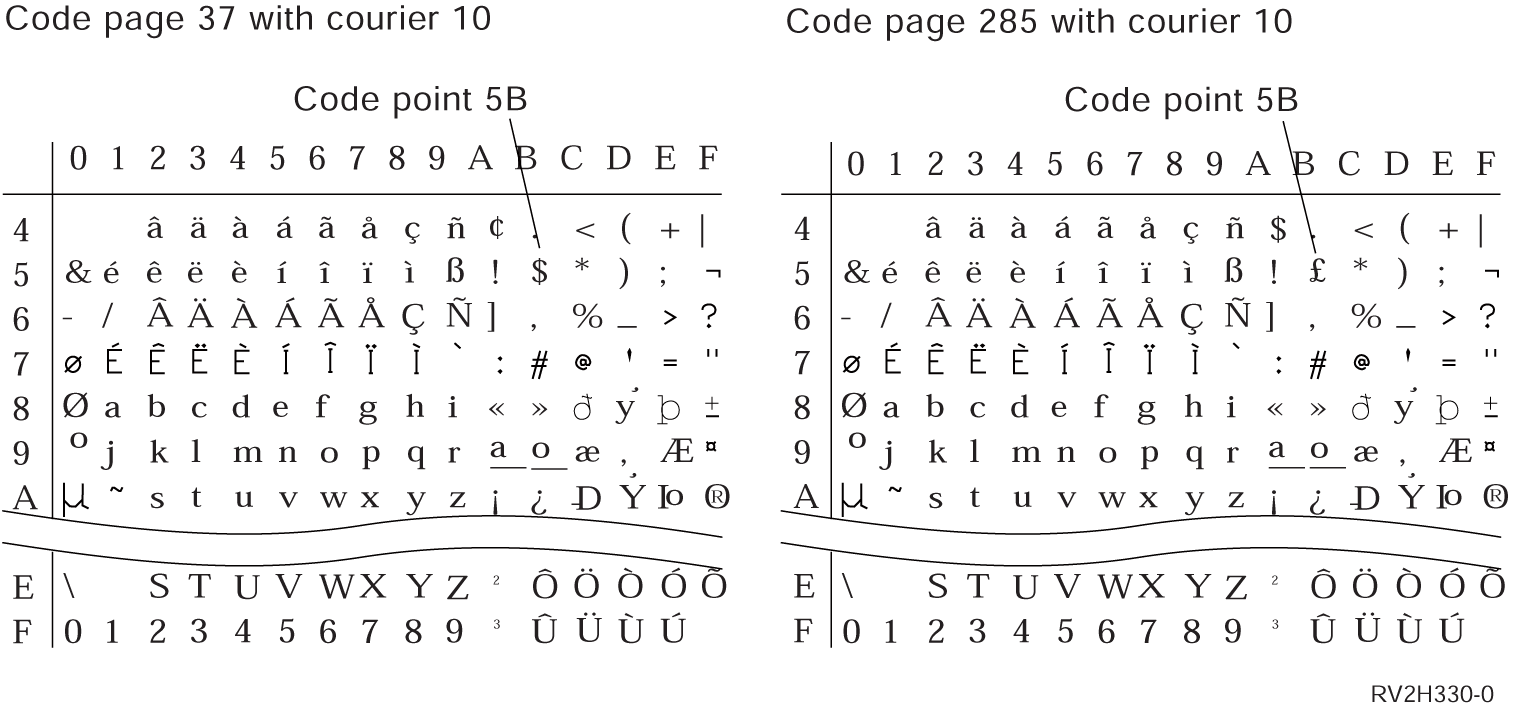
Code pages come in two types:
Code pages are groups of characters. Within a code page, there are unique hexadecimal identifiers assigned to each of the characters.
As you enter your text at a computer keyboard, each keyboard character is translated into a code point. When the text is printed, each code point is matched to a character ID on the code page you specified. The character ID is then matched to the image (raster pattern) of the character in the character set you specified.
Some of these characters can be repeated in different code pages and have a different hexadecimal identifier assigned to them. Conversely, the hexadecimal identifier can be the same, but the characters will be different. Therefore, if you have applications that use certain characters contained in only one particular code page, it is important to know which code page you are using.
Below is a diagram of two code pages: code page 37 and code page 285. They are printed in a 10-characters-per-inch (courier 10) font. Notice the different character that occurs at code point hex X'5B'. One is a US dollar ($) sign and the other an English pound or currency sign. This example shows that different characters will print depending on the code page you specify even though you are using an identical font style.
